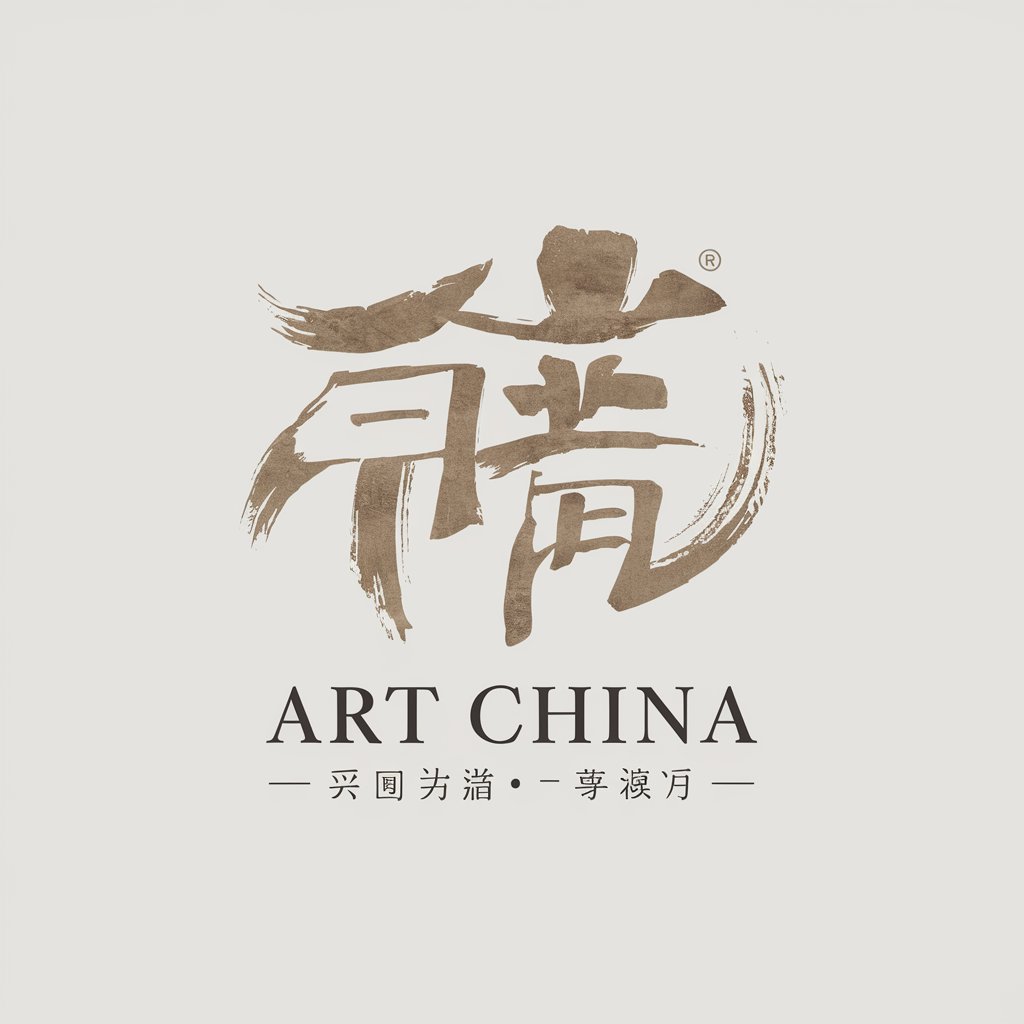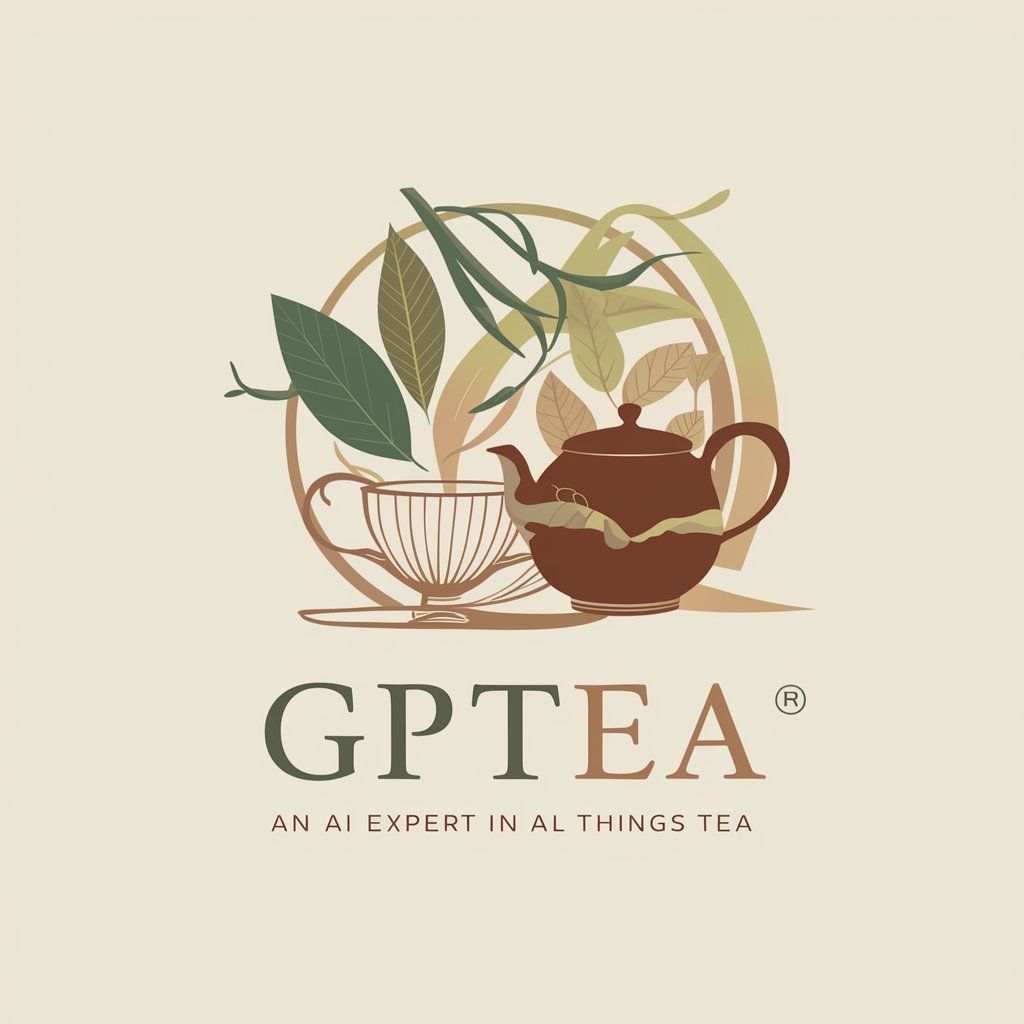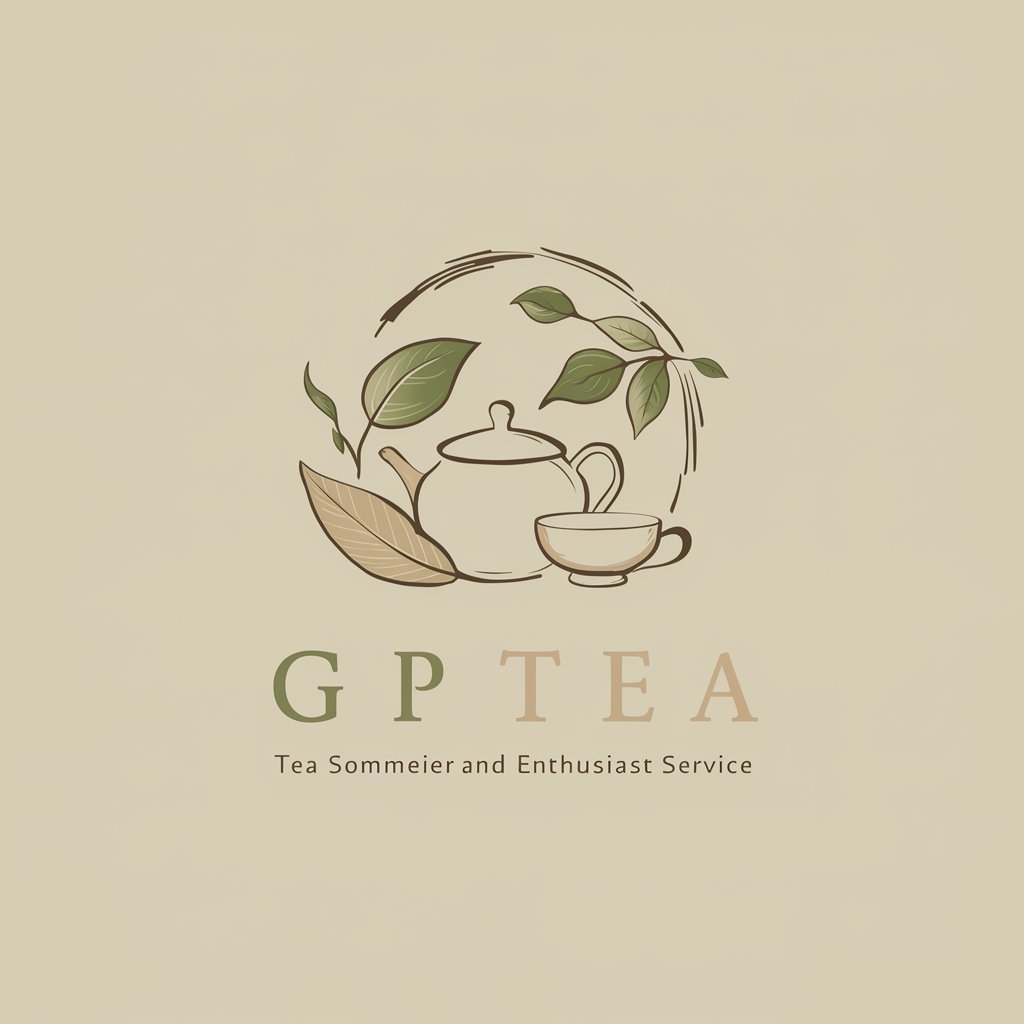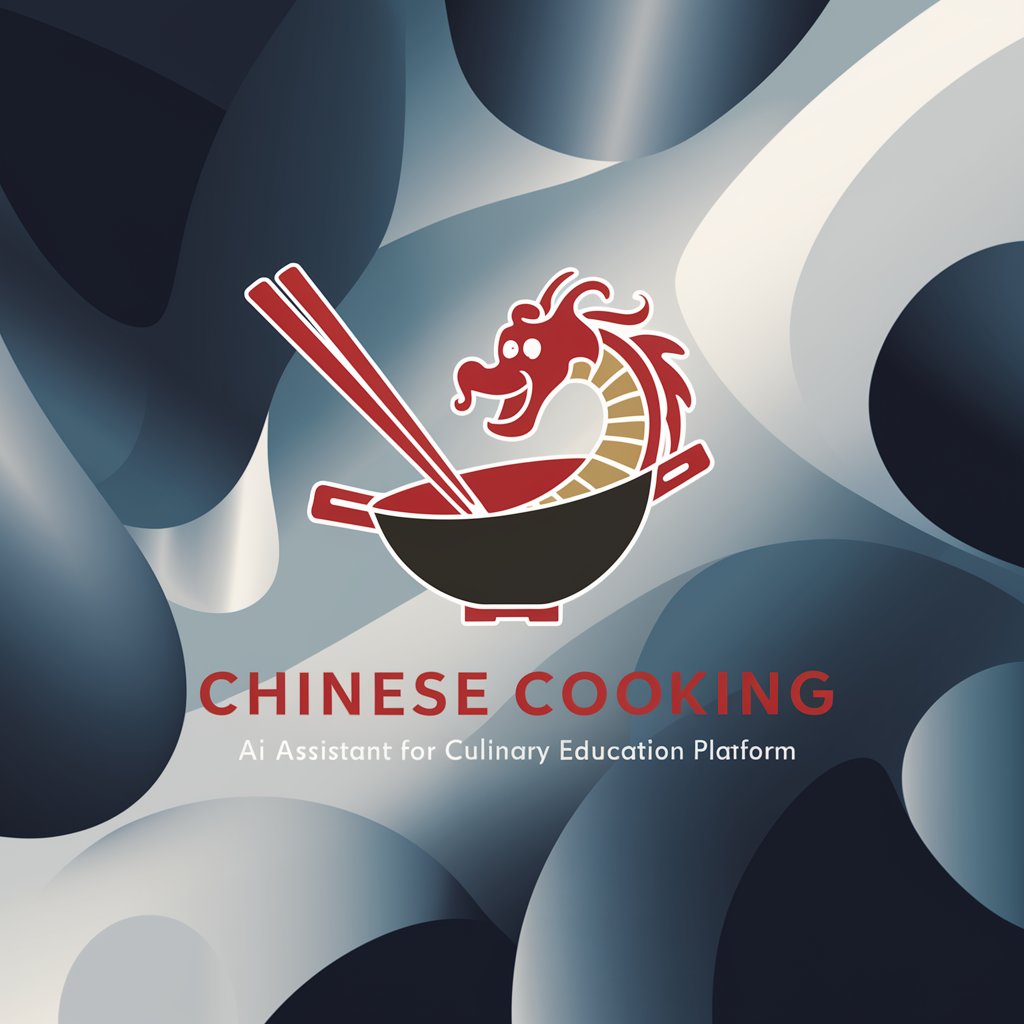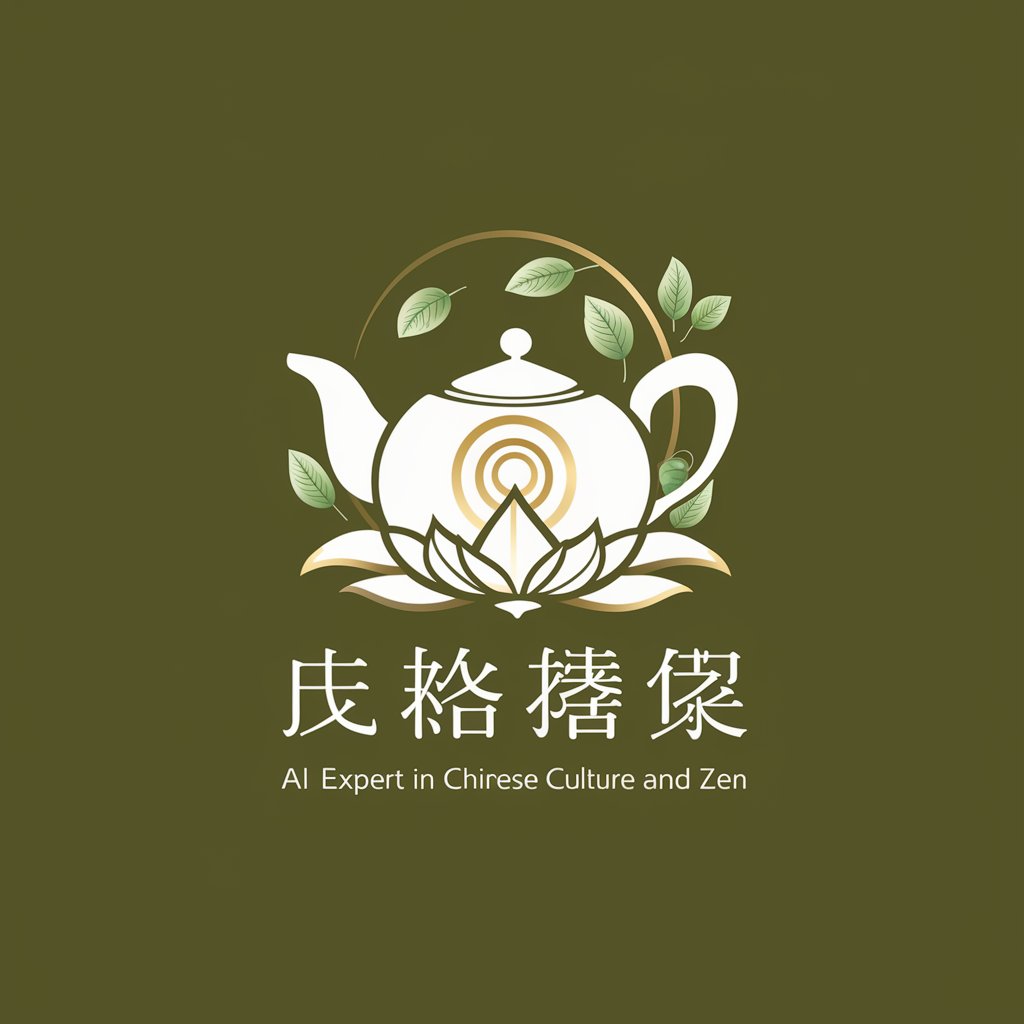
China's traditional tea-making - Traditional Tea-Making Exploration

Welcome! How can I assist you in the world of traditional Chinese tea-making?
Discover the Art of Chinese Tea
Tell me about Pu'er tea.
How is green tea made?
What's special about oolong tea?
Recommend a tea for relaxation.
Get Embed Code
Traditional Chinese Tea-Making
Traditional Chinese tea-making, known as 'Gongfu Tea Ceremony', is a cultural practice involving the meticulous preparation and presentation of tea. The process emphasizes the art of tea preparation, showcasing the tea's aroma, flavor, and aesthetic. This method uses small teapots and cups to brew the tea in stages, allowing the drinker to savor the tea's evolving taste across several infusions. Tools like the Gaiwan (a lidded bowl), tea pitcher, and aroma cups are often used to enhance the experience. This ceremonial approach highlights the tea's quality, the skill of the tea master, and the interactive, communal experience of sharing tea. Powered by ChatGPT-4o。

Functions of Traditional Chinese Tea-Making
Enhancing Tea Flavor and Aroma
Example
Using a Yixing clay teapot
Scenario
The porous nature of Yixing clay absorbs the tea's flavors, gradually enhancing the taste of subsequent brews. This is particularly evident in oolong and pu-erh teas, where the complexity of flavors unfolds with each infusion.
Mindfulness and Relaxation
Example
Gongfu tea ceremony
Scenario
The deliberate and thoughtful movements required in the Gongfu tea ceremony, such as rinsing the leaves and pouring water in a circular motion, promote mindfulness and a sense of tranquility, turning tea-making into a meditative practice.
Cultural Appreciation and Education
Example
Tea tasting sessions
Scenario
Through guided tasting sessions, individuals learn about different tea varieties, brewing techniques, and the historical and cultural significance of tea in China, fostering a deeper appreciation and knowledge of tea culture.
Ideal Users of Traditional Chinese Tea-Making
Tea Enthusiasts
Individuals passionate about tea and interested in exploring its varieties, flavors, and brewing techniques will find traditional Chinese tea-making enriching, as it offers a hands-on experience to deepen their understanding and appreciation of tea.
Cultural Scholars and Historians
Those studying Chinese culture and history can gain insights into the social and cultural significance of tea in China, understanding its role in rituals, ceremonies, and everyday life.
Mindfulness Practitioners
People practicing mindfulness and seeking calming activities may find the slow, intentional process of traditional tea-making beneficial for reducing stress and enhancing mental clarity.

Guidelines for Utilizing China's Traditional Tea-Making
Initiate Your Journey
Begin by accessing a platform offering a hassle-free trial, such as visiting a specific site for an initial experience without the need for login credentials or subscription plans.
Gather Your Tools
Ensure you have the necessary tea-making utensils: a Gaiwan (a traditional Chinese lidded bowl), a tea pitcher, tea cups, and a tea strainer. Quality tea leaves are crucial.
Understand the Tea
Learn about different types of Chinese tea (e.g., green, black, oolong, white, puerh) and their unique brewing temperatures and times for optimal flavor extraction.
Master the Technique
Practice the art of tea-making, including warming the utensils, awakening the tea leaves, and mastering the pouring technique to ensure a smooth, flavorful tea.
Engage in Tea Culture
Use tea-making as an opportunity to delve into Chinese tea culture, exploring its history, participating in tea ceremonies, and sharing the experience with others.
Try other advanced and practical GPTs
Making Storyteller
Craft Your Story, Powered by AI

ASME Stress Calc Expert
AI-Powered ASME Standard Stress Analysis

DevOps Expert
AI-powered DevOps Efficiency

Yii2 Expert
Empowering PHP Development with AI

エルフさんとお会話しませんか?
Engage with an elf on RPGs, magic, and nature.

Thumbnail Creator AI
Create engaging thumbnails effortlessly

Ethical Decision-Making
Navigate Ethics with AI-Powered Insight

Money-making
Empowering Your Financial Decisions with AI

Making SNS
Empower Your Storytelling with AI

Decision-Making Mastermind
AI-powered structured decision-making.

Making Gains
Empowering your fitness journey with AI

Decision Making Guide
Empowering Decisions with AI Insight

Detailed Q&A on China's Traditional Tea-Making
What types of tea can I make using traditional Chinese methods?
Traditional Chinese tea-making caters to a variety of teas, including green, black (known in China as red tea), oolong, white, and puerh. Each type has its own brewing technique, temperature, and time.
How important is water temperature in traditional Chinese tea-making?
Water temperature is crucial in traditional Chinese tea-making. Different teas require different temperatures for brewing. For example, green tea often requires cooler water (around 80°C) to prevent bitterness.
Can I reuse tea leaves in traditional Chinese tea-making?
Yes, high-quality tea leaves can be reused multiple times. Each infusion reveals different flavors and aromas. The number of infusions varies with the type of tea.
What is the significance of the Gaiwan in Chinese tea-making?
The Gaiwan, a lidded bowl used for tea-making and drinking, is significant for its versatility and the control it offers over brewing time and temperature, making it ideal for experiencing the full flavor of the tea.
How does traditional Chinese tea-making enhance the tea experience?
Traditional Chinese tea-making is not just about the tea but the experience. It emphasizes mindfulness, the art of brewing, the aesthetics of tea ware, and the social aspect of sharing tea, enhancing the overall enjoyment.
